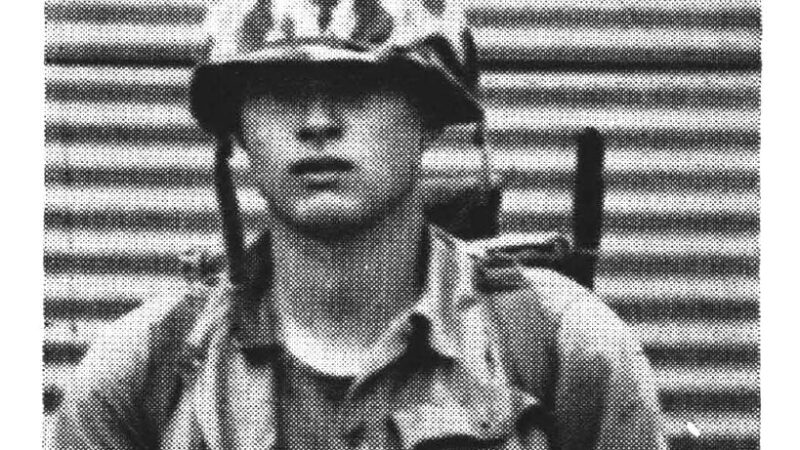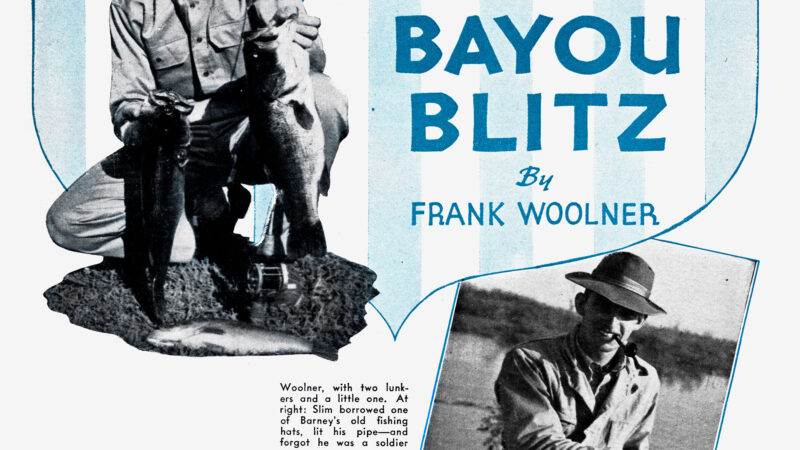Cheap vs Expensive: Backpacking Tents
We may earn revenue from the products available on this page and participate in affiliate programs. Learn More ›
The big three in backpacking gear refers to your backpack, sleep system, and tent. They’re the largest and most crucial parts of your hiking kit. Outdoor Life has done extensive field testing on all three, and we can easily direct you to the best-in-class equipment. But what if you don’t have a best-in-class budget? I upgraded from a $70 tent off Amazon to one of the most expensive ultralight shelters to bring you some thoughts on whether you can cheap out on your backpacking tent, or if it’s worth a splurge.
Cheap Tent
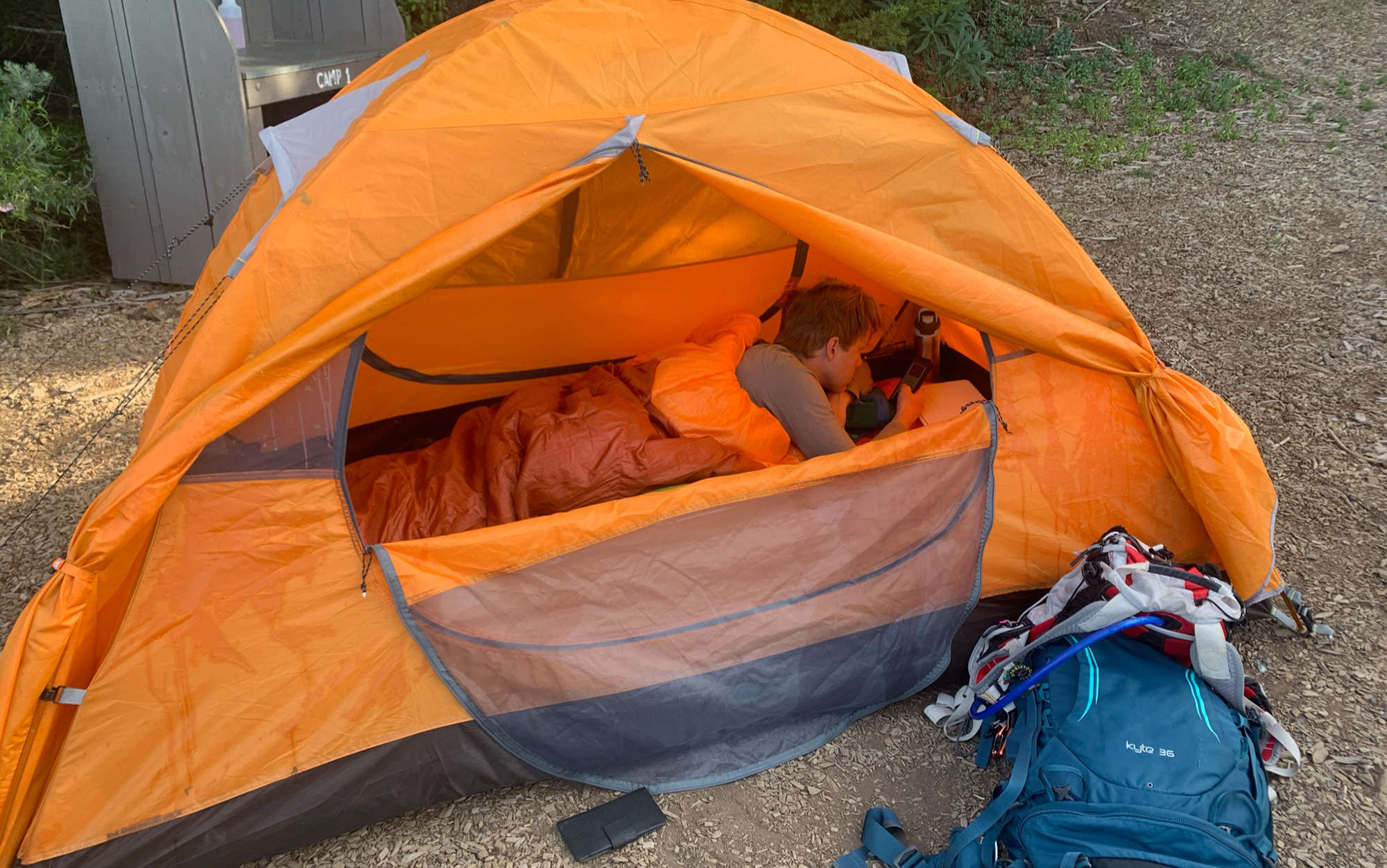
Ashley Thess
My first foray into backpacking started in an AirBnb in Tennessee. I was living there at the time, adding the cheapest backpacking gear I could find to my Amazon cart in preparation for a month-long trip to California. Vaccines were becoming available, rental cars were a steal, and my cabin fever from Covid-19 was becoming unbearable. I thought there was no better time to try walking into the forest with everything I needed on my back.
So, I took a look at the big three: backpack, sleeping bag, and tent. I had heard horror stories about backpacks that didn’t fit, dug into your hips, and made your trip miserable. So I decided to shell out for a new Osprey Kyte 36 off the rack at REI. Next is the sleeping bag. I hate being cold, so I wasn’t going with a no-name Amazon brand on that one. A bulky synthetic bag on sale had my name all over it.
A tent seemed like the perfect place to skimp. I found a little orange tent on Amazon for $70. One of the five star reviews included a photo of the tent with a foot of snow on top: Sold. So what if it weighed 5 pounds?
Expensive Tent
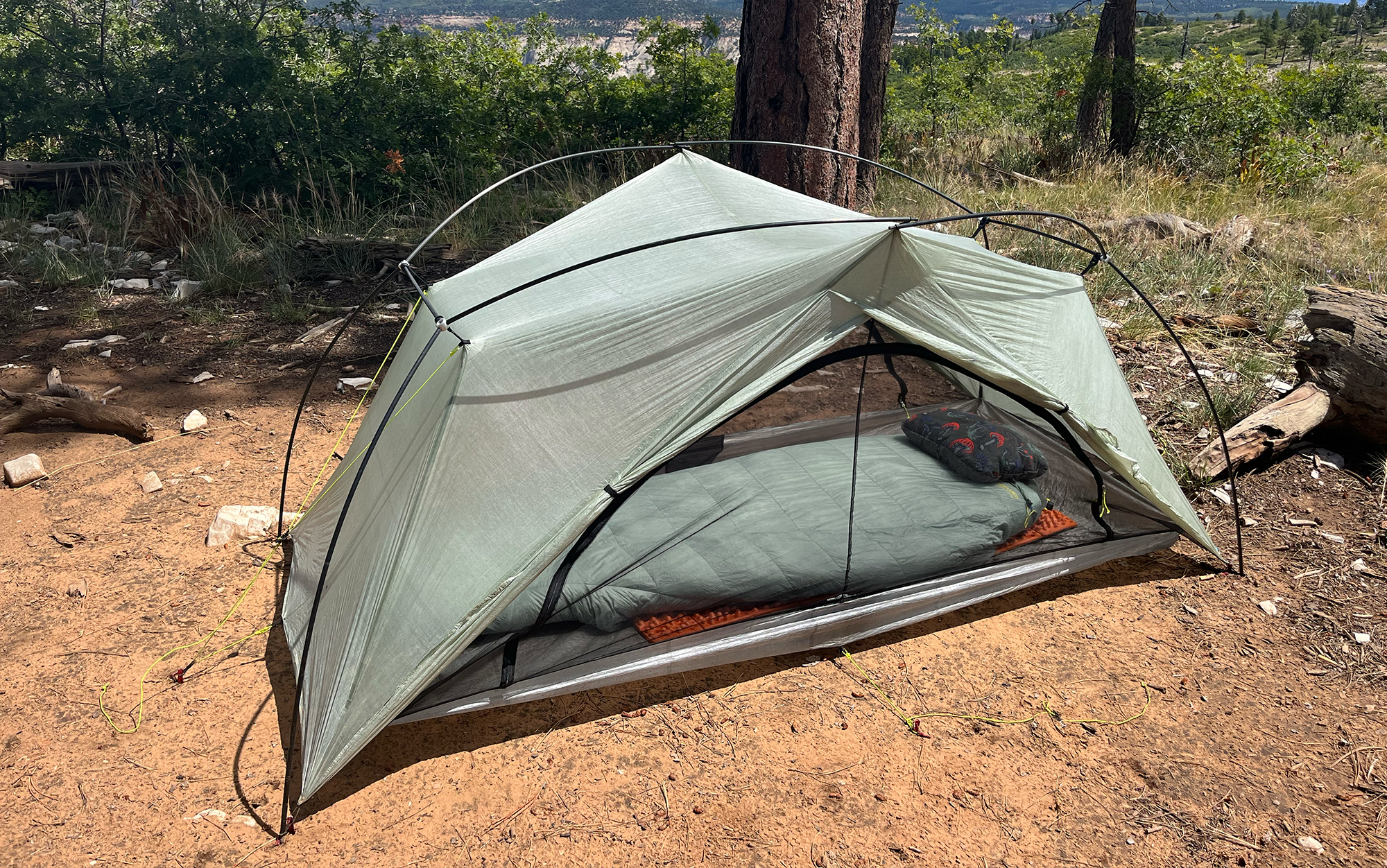
Ashley Thess
In the span of a year I moved to Utah, and fell deeply in love with backpacking. A thru-hiker friend was selling her Zpacks Free Duo (a $900 tent) for $500 to buy herself a new Zpacks model. As a hungry new hiker, I was thrilled to take it off her hands and transition to a sub-2 pound shelter, unlocking longer trips into the backcountry.
Save or Spend?
After a few overnights with my budget tent, I made a massive upgrade to one of the lightest and priciest freestanding shelters on the market. I’m going to use this extreme juxtaposition to expand on some motivators to consider before buying a cheap vs expensive backpacking tent. Should you shell out for your shelter, or can you get away with a budget-friendly substitute?
Weight
Let’s start with the most obvious concern: weight. In a sport where people chop their toothbrushes in half, sleep under a tarp, or forgo a hot meal just to save a few ounces, 5 pounds seems insane. Under 2.5 pounds however, is much more standard when it comes to the best backpacking tents. If you can share a tent (and split the weight) with a hiking partner or friends, that 5 pounds becomes a lot more doable.
This obviously isn’t a perfect system; it would still be a lot nicer to split a 3-pound tent with a friend than a 5-pound one. But if you plan to hike with close friends or a partner and you’re just dipping your toes into backpacking, it could work out.
The real issue arises when you’re hiking alone. I’ve carried that 5-pound tent into the desert by myself, and it sucked. Going lighter is always going to feel better on your back. So when you’re investing in backpacking gear, you’re also investing in how much fun you’re going to have on your trips.
When you carry a tent that’s twice as heavy as an ultralight tent, you start to sacrifice the distance of your hike. If you are trying to cover serious miles then getting your pack weight down is fundamental as every extra ounce will slow you down.
Packability
The heavier and cheaper your tent is, the bulkier it will be, too. Plenty of people carry their tent on the outside of their pack, but if weather rolls in or you fall on a river crossing, you’ll end up with a soggy shelter. If you can fit at least the tent body and fly in your bag (feel free to strap the poles to the outside), it’s less risky.
Budget backpacking kits are typically going to be bigger than expensive ones. And if you opt for an ultralight or smaller capacity backpack, you might struggle to fit everything inside. The Zpacks Free Duo tent body packs into a 7-inch wide cube, leaving more room for longer food and water hauls, or a couple beers and an entire bag of potato chips.
Weather
Weight and packability mostly come down to personal preference. Are you willing to carry more weight and leave a few things at home to save some money? Maybe. But if your tent can’t handle whatever weather you encounter on your trip, it becomes a safety issue.
I’ll be the first to brag that my cheapo tent has survived nights of non-stop rain and vicious desert winds (though, when I climbed inside it was filled with sand). As a testament to its durability, I still use that tent for car camping. But the stakes are pretty low when in the worst case scenario I have an uncomfortable night’s sleep in the backseat of a dry and secure vehicle. That’s not a reality when you’re backpacking.
I’m not sure how many storms a tent of that quality reliably has in it, and I wouldn’t want to find out in freezing alpine rains 30 miles from my car. If your trips are short, in mild conditions, you’ll probably be just fine. But if you want to go farther, longer, or in substandard conditions, the risk may start to outweigh the reward.
Warranty
Any reputable outdoor brand has at least a year warranty on their products. Plenty will offer repairs for a price, too. When you buy one of the best backpacking tents, you’re getting customer service along with it. After Amazon’s 30-day return policy, you’re at the end of your rope with a cheap tent.
Cheap vs Expensive: What Backpacking Tent Should You Buy?
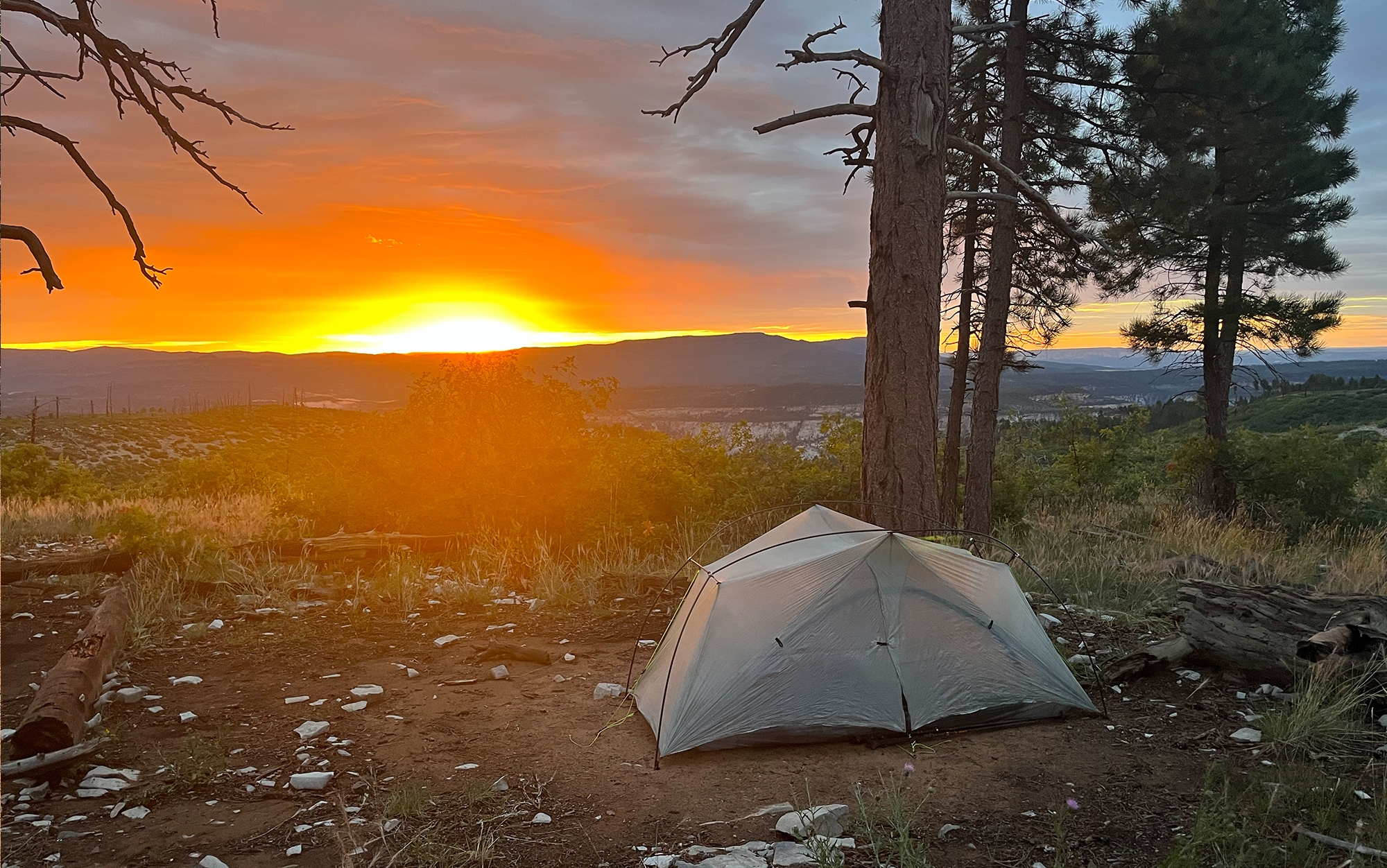
Ashley Thess
While $70 is an extremely low priced tent, you’ll find plenty of $200 5-pound backpacking tents from brands you at least recognize the name of. They’re sold at big box stores and sporting goods warehouses, and I have some experience with these, too. Generally, the quality of these items reflects their price. And if a pole snaps on a windy night, you’ll likely be able to get a refund or a new tent (with the same shoddy poles), but you’ll never get the eight sleepless hours you spent in an unstructured tent back.
That’s not to say you have to shell out for a $900 tent to get a reliable night’s sleep on trail. If you want to invest in a quality shelter that weighs less than 3 pounds, expect to pay $300 to $400. But the best backpacking tents should last you many years, and they have the warranty to back it up.
| Trekking Pole Tents | Weight | Price |
| Durston X-Mid 1 | 1 pound, 14.8 ounces* | $234* |
| Gossamer Gear The One | 1 pound, 8 ounces* | $255* |
| Tarptent Protrail | 1 pound, 8 ounces* | $240* |
| Freestanding Tents | Weight | Price |
| Big Agnes Fly Creek | 2 pounds | $370 |
| Nemo Hornet Osmo | 2 pounds, 4 ounces | $400 |
Read Next: Durston X-Mid 1 Review: A Beginner-Friendly Ultralight Shelter
Alternatives
If you aren’t ready to commit to a quality backpacking tent off the bat, there are better solutions than buying a tent off Amazon that might have worse luck than the one I ended up with. Try borrowing gear from someone to see how you like it first. Or shop used to get started. If you’re a veteran backpacker, but short on cash, there are patterns online you can use to sew your own gear, especially a simple tarp tent.
Final Thoughts on Cheap vs Expensive Backpacking Tents
With a price difference of $830, I’ve seen both cheap vs expensive backpacking tent extremes, and the happy middle. I don’t regret buying that 5-pound tent on Amazon (afterall, it was only $70). But I only backpacked with it a few times before I was ready for an upgrade. Go ahead and skip the cheap tent detour and put your money towards a tent you can rely on. And if you have expensive taste like me, check out my full review of the newest iteration of the Zpacks Free Duo, now called the Free Zip.
The post Cheap vs Expensive: Backpacking Tents appeared first on Outdoor Life.
Source: https://www.outdoorlife.com/gear/cheap-vs-expensive-backpacking-tents/


